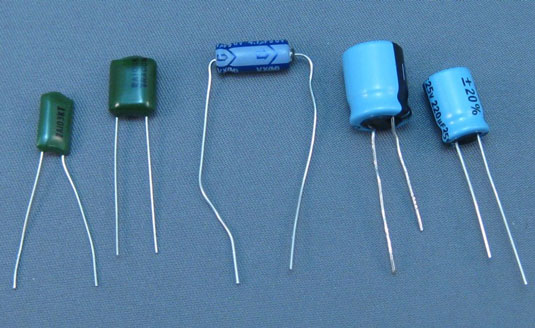Leads are attached to each plate and a coating or other case is placed around the capacitor. The plates and the dielectric can be made from a variety of different materials, so different kinds of capacitors have different qualities and uses. The figure shows an assortment of capacitors.
Capacitors, or caps as they are often called, are used in many ways in circuits. In this project, you use caps to
- Store electrical energy: A capacitor can act like a temporary battery, providing energy to other components in a circuit even when there is no battery or other voltage source.
- Create a timer: Working with a resistor, a capacitor can control the amount of time it takes for an event, such as the sounding of a buzzer or the lighting of an LED, to occur in a circuit.
Capacitance is measured in units called farads (abbreviated F), but most capacitors used in electronics have capacitances in the microfarad range. One microfarad equals one millionth (or 10−6) of a farad.


